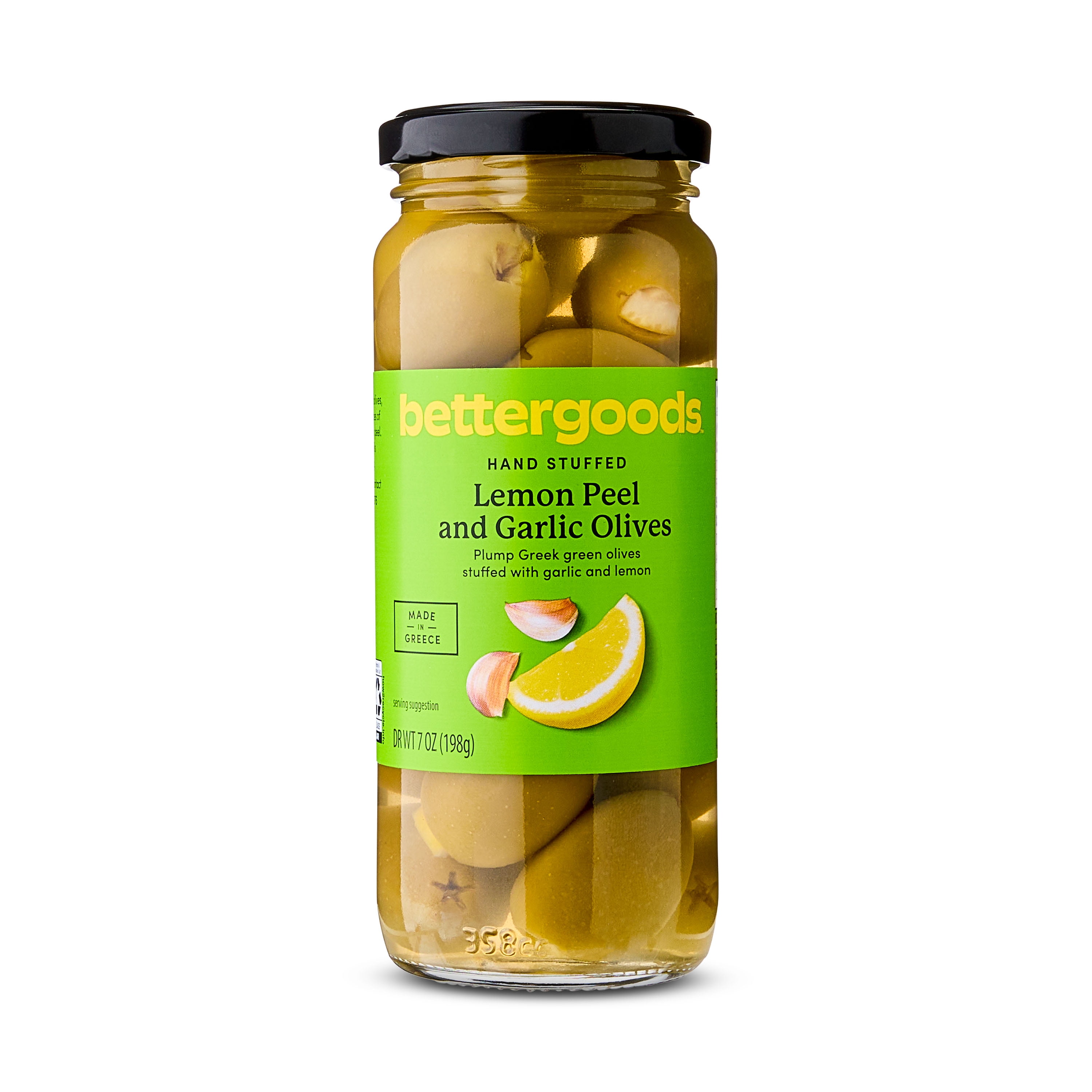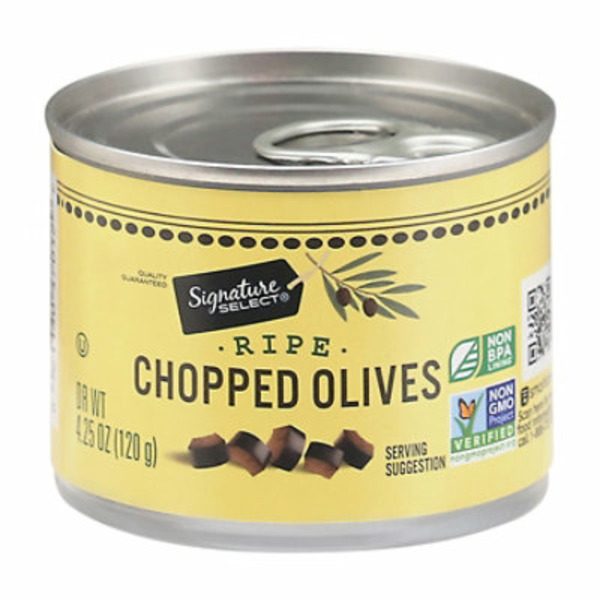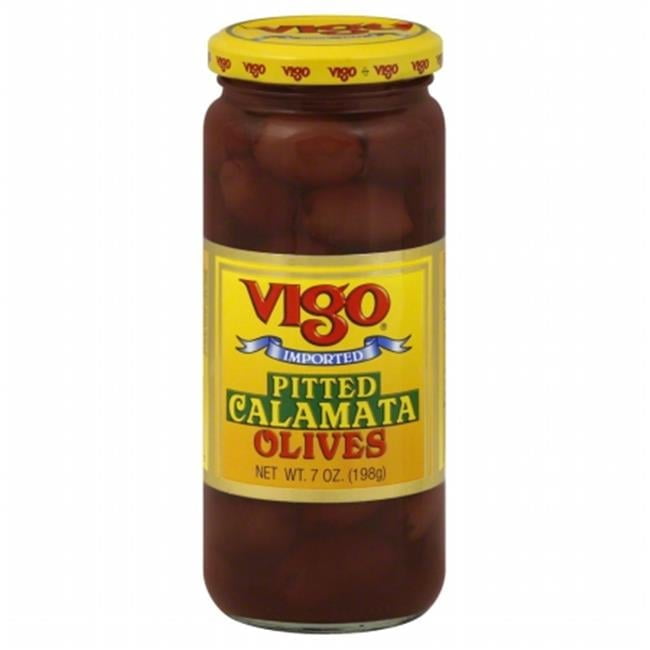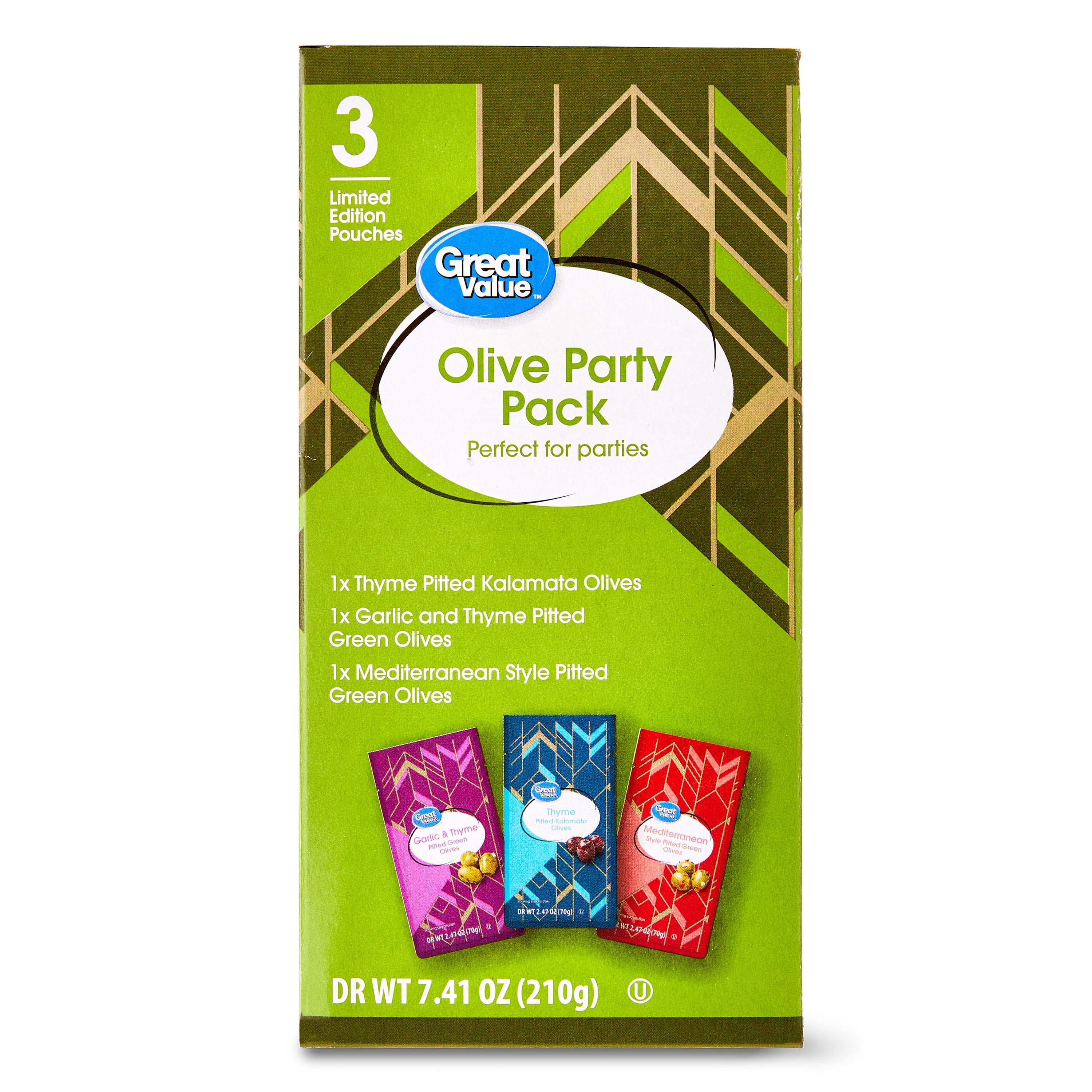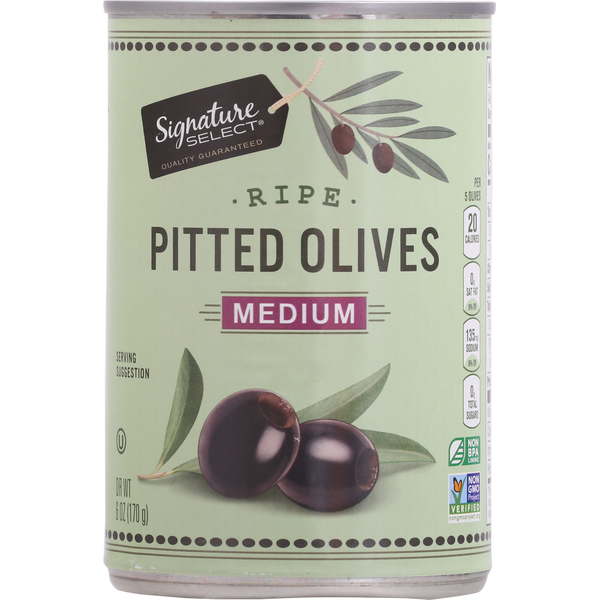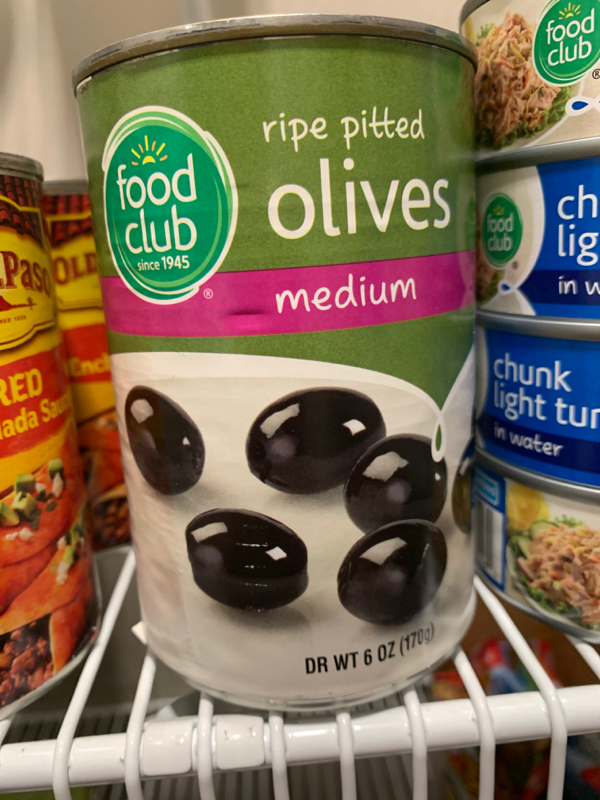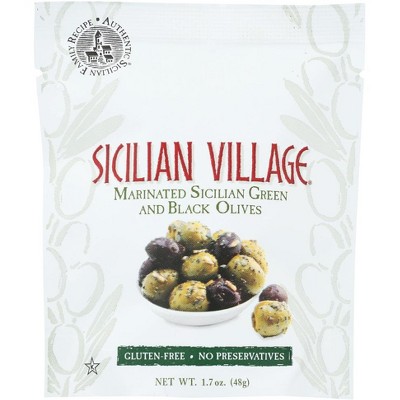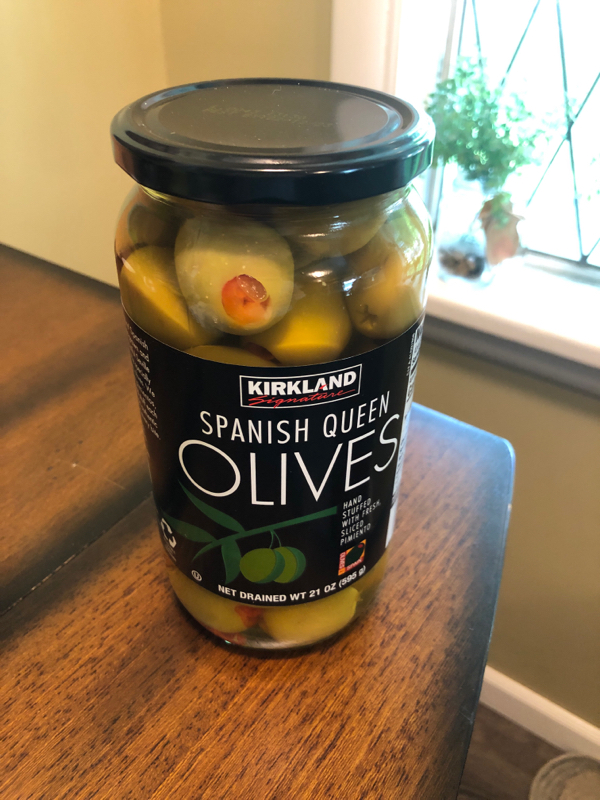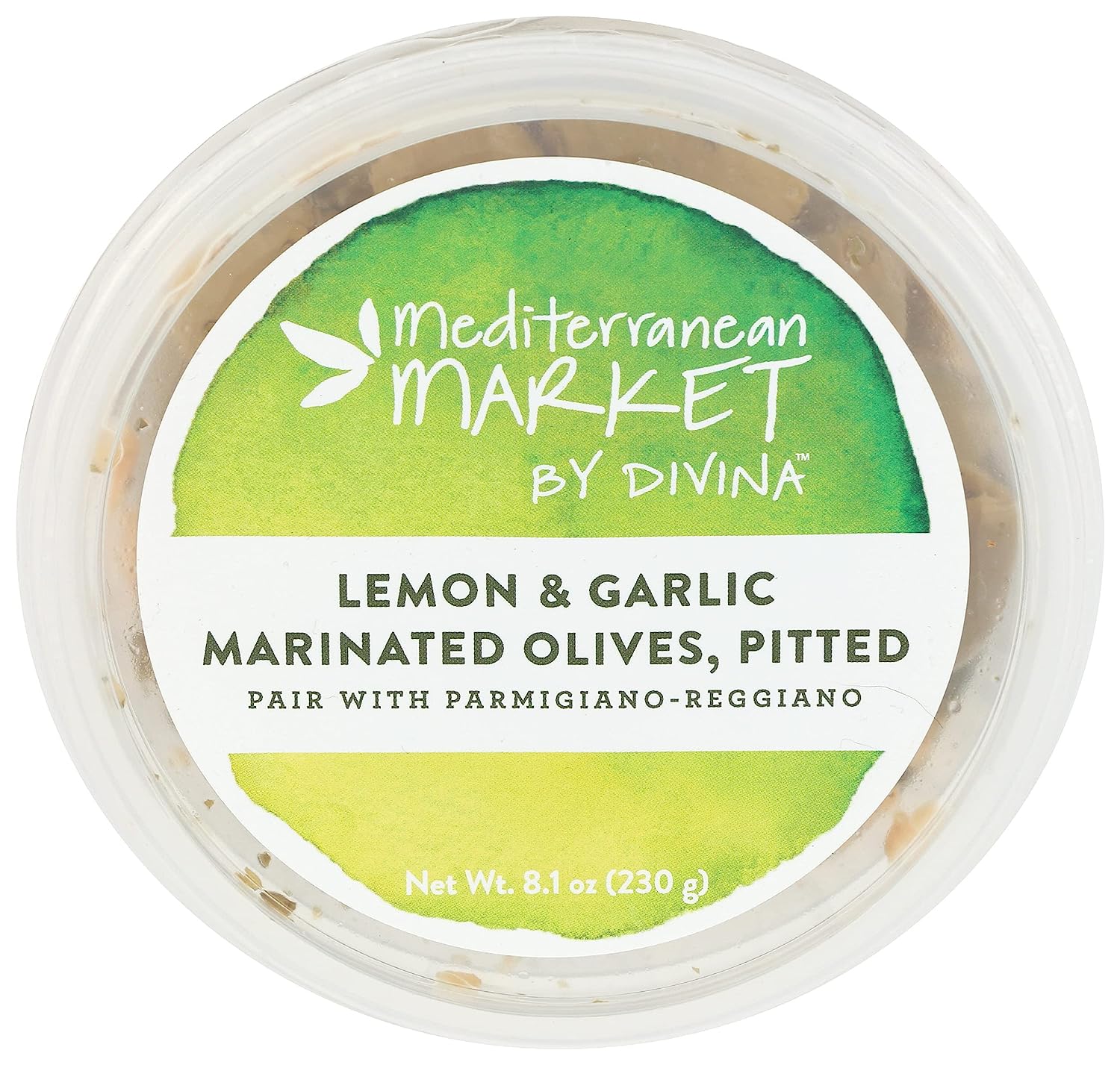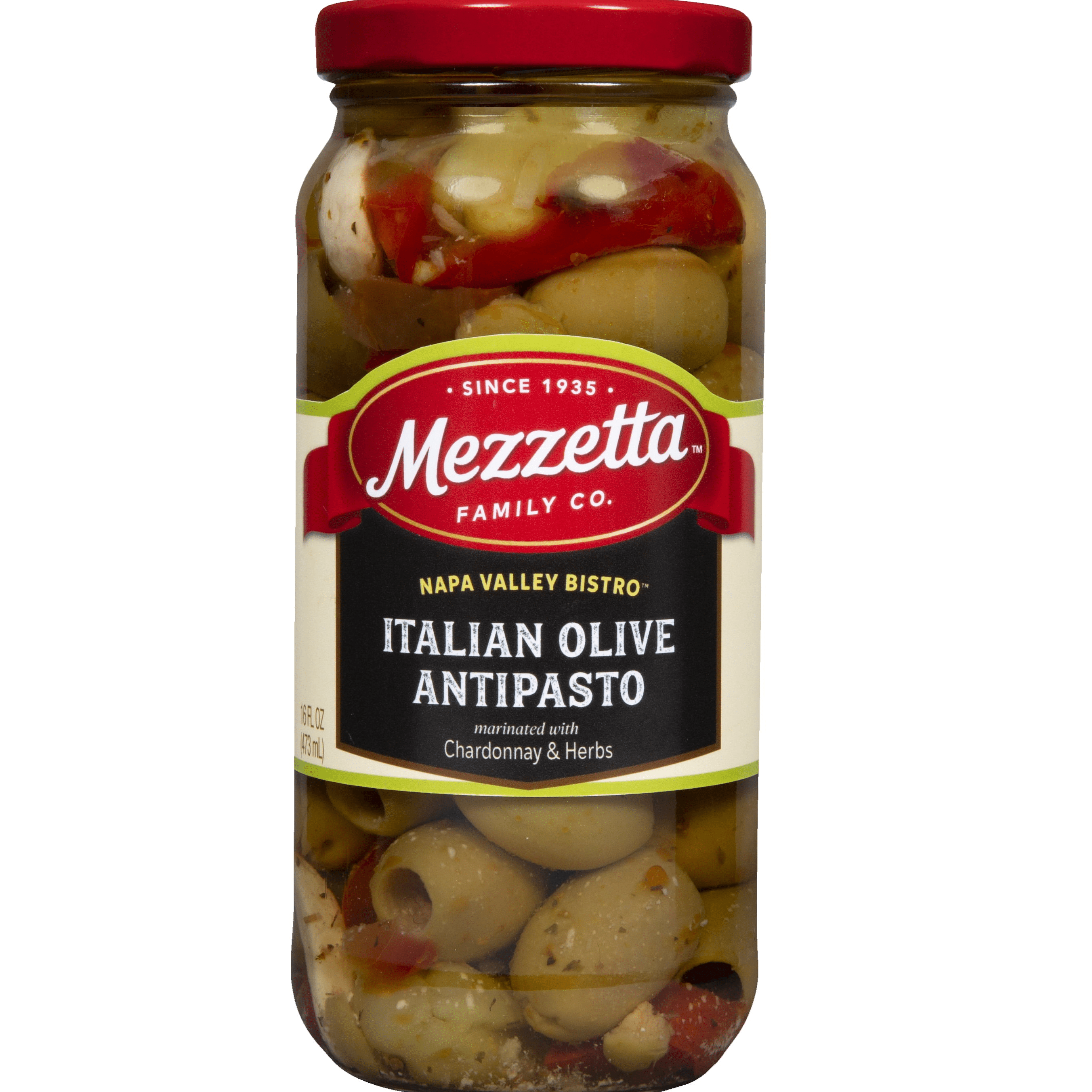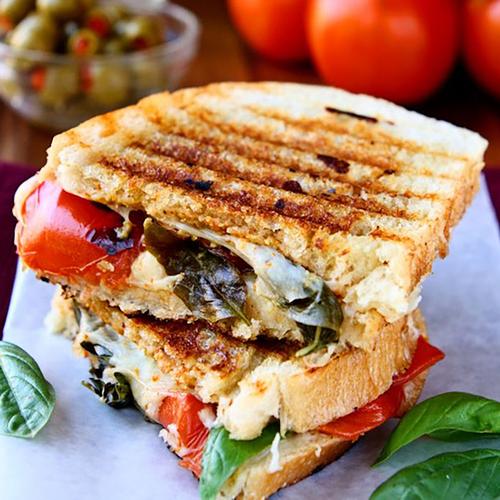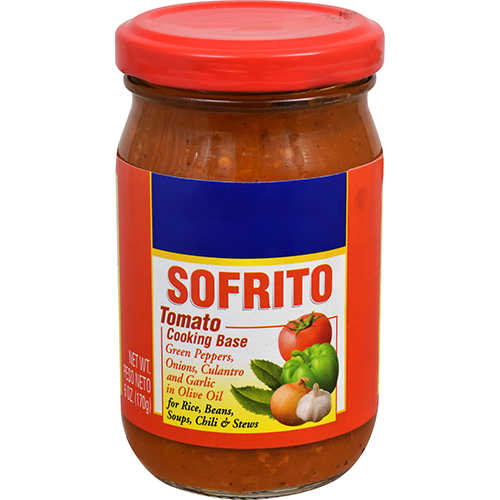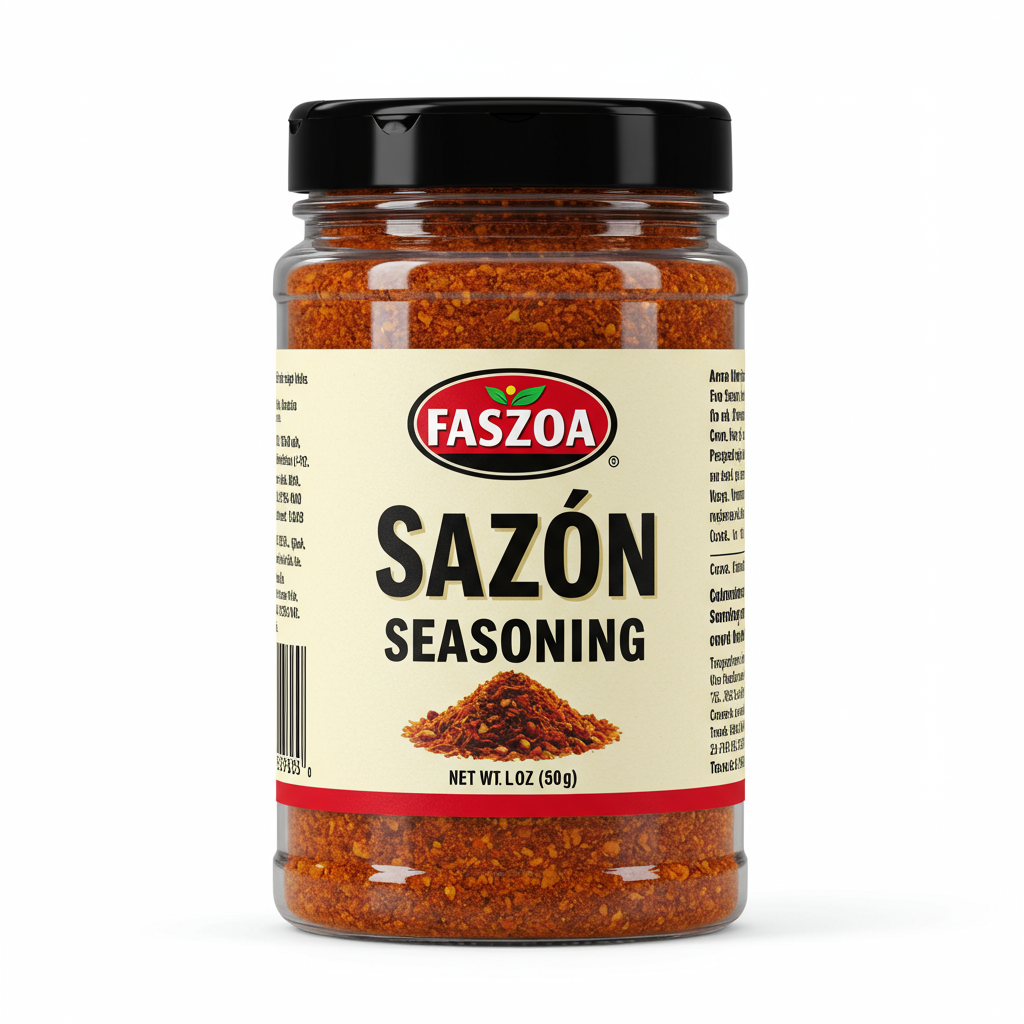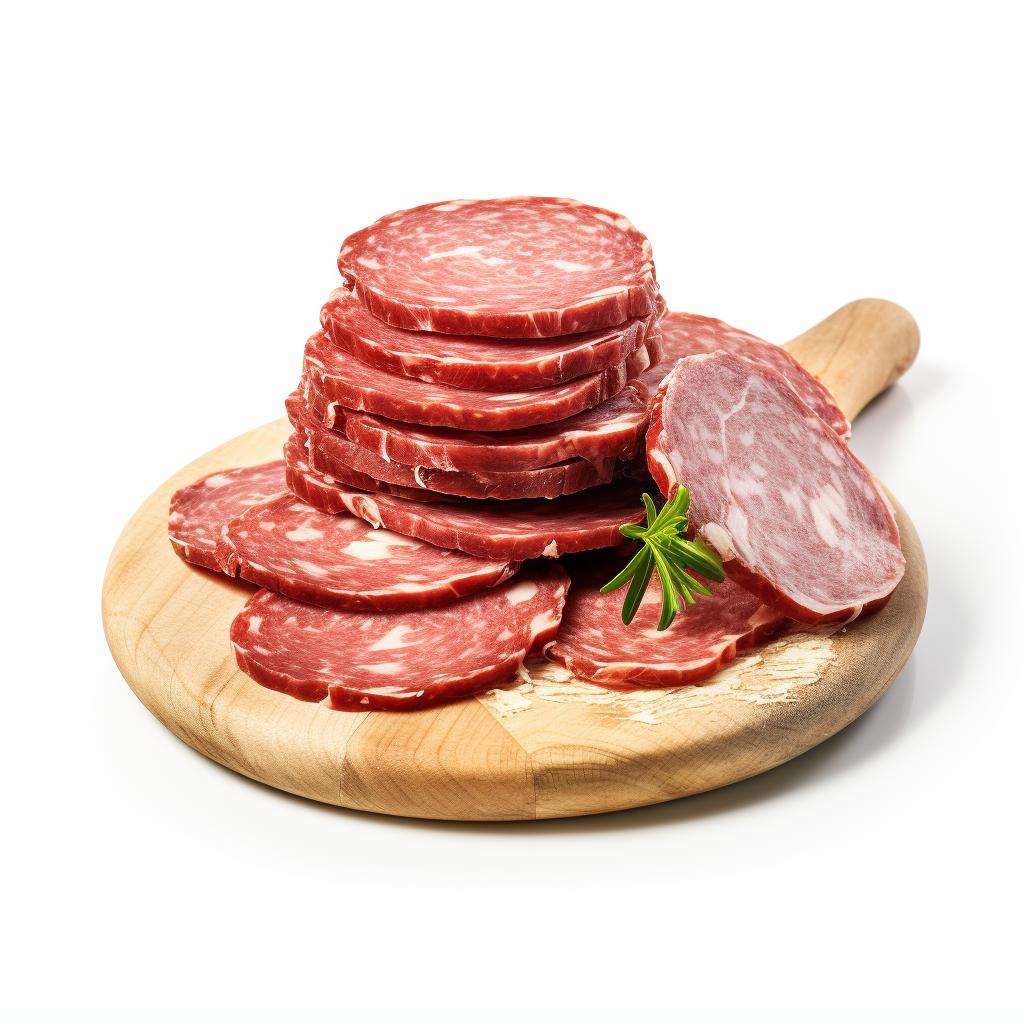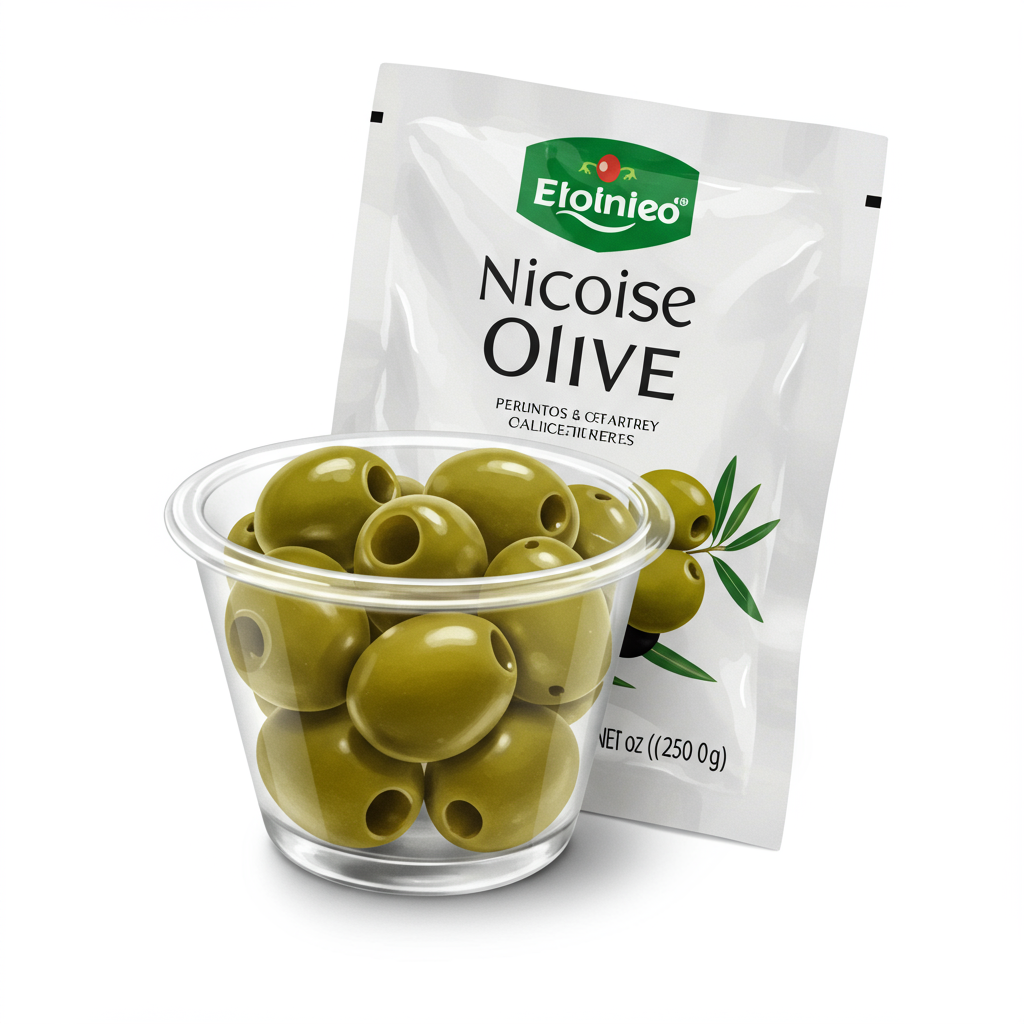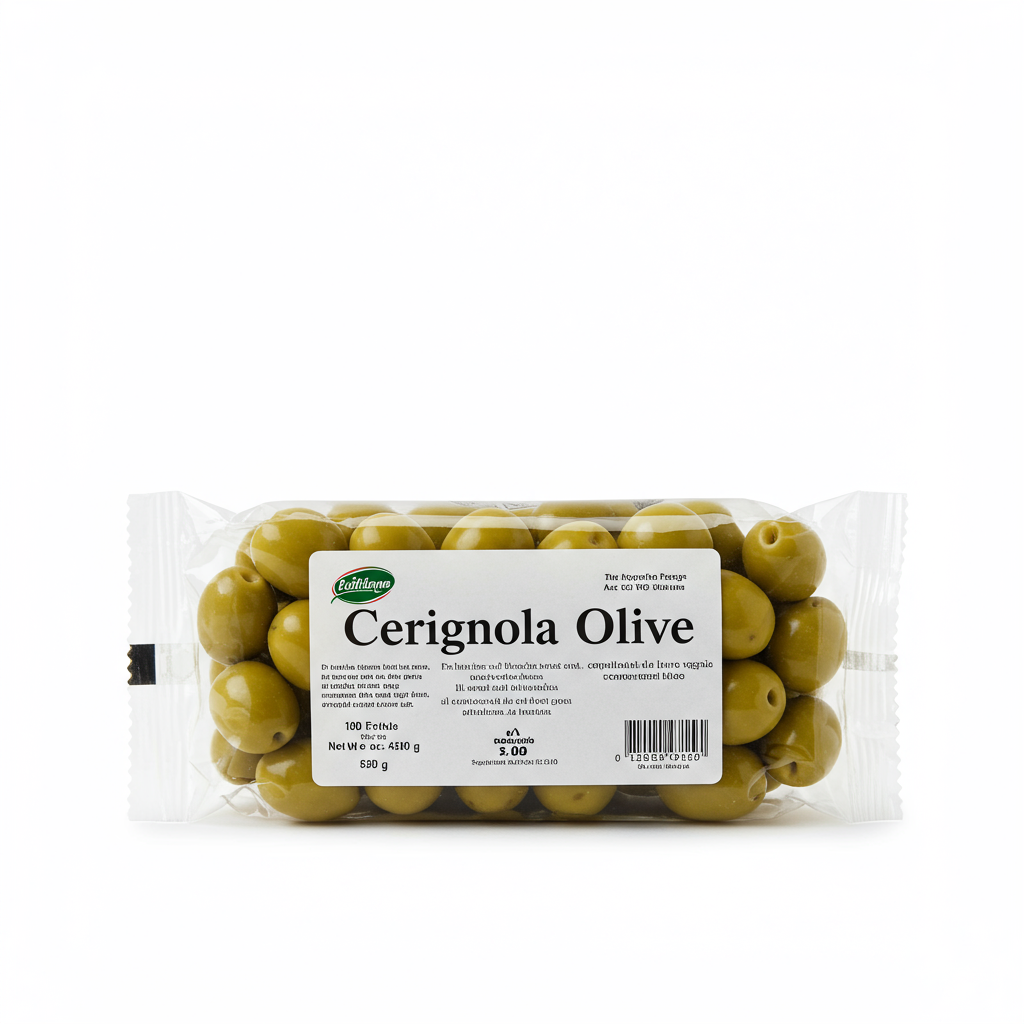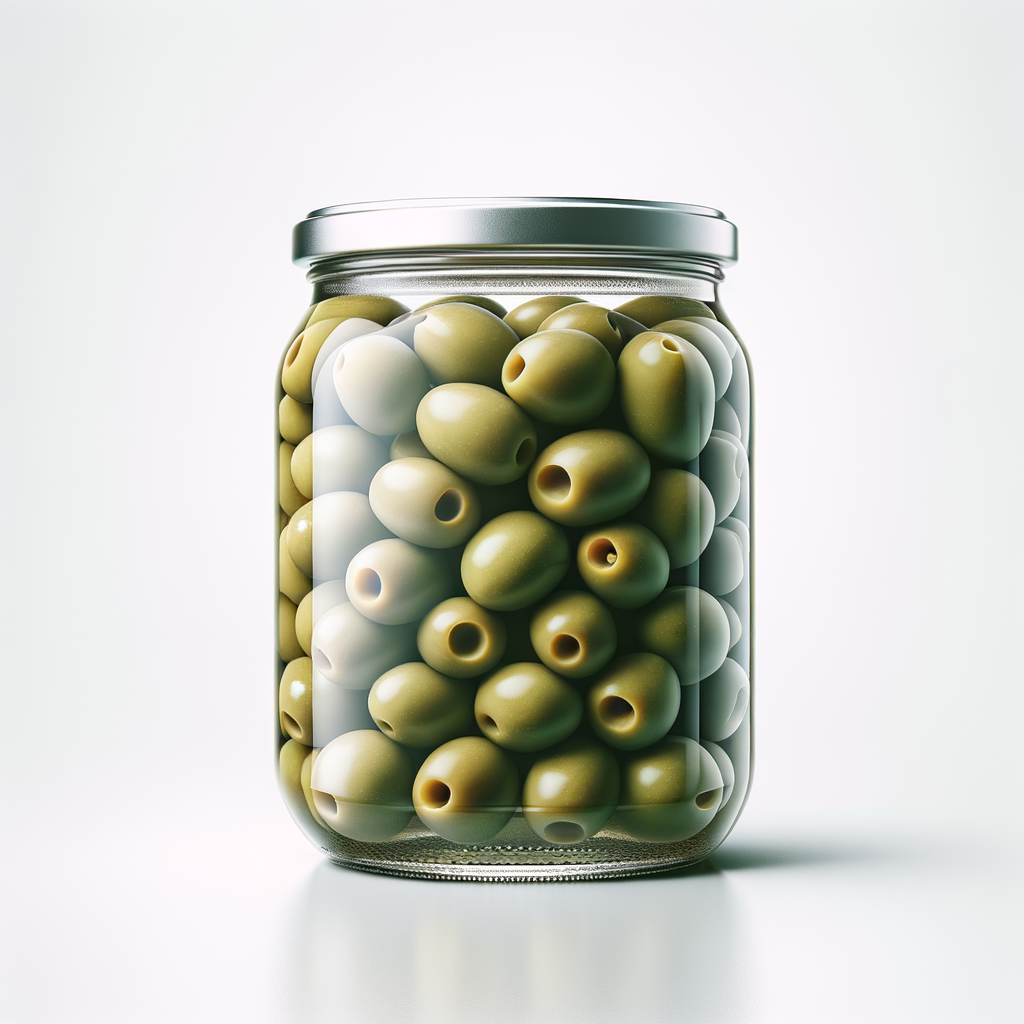SALADS
APPETIZERS
SNACKS
Olive
Olive is a small, oval-shaped fruit that comes from the Olea europaea tree, often found in Mediterranean climates. They are widely recognized by their distinct, bitter taste and the oil they produce, which is a popular ingredient in various cuisines. Olives come in a variety of colors, ranging from green to black, depending on their ripeness and variety.
Consumed as a table fruit or used to produce olive oil, olives boast various health benefits owed to their rich content of antioxidants, healthy fats, and vitamins. They are also prominent in Mediterranean cooking, often found in salads, pizza toppings, tapenades, or eaten as a snack.
34%
CARBS
61%
FAT
5%
PROTEIN
1,401 Olive Products
bettergoods Lemon Peel and Garlic Olives
SIGNATURE SELECTS Olives, Ripe, Chopped
Vigo Olives, Calamata, Pitted
Great Value Olive Party Pack, Limited Edition Pouches, Dr Wt
SIGNATURE SELECTS Olives, Ripe, Pitted, Medium
Medium Ripe Pitted Olives
Sicilian Village Marinated Green and Black Olives
Spanish Queen Olives
MEDITERRANEAN MARKET BY DIVINA Pitted Marinated Lemon Garlic Olives
Mezzetta Napa Valley Bistro Italian Olive Antipasto with Chardonnay & Herbs
Olive Is Frequently Used With
Olive FAQ
When cooking with olives, people often wonder about the difference between green and black ones and how to deseed them. In some instances, people go wrong by choosing to use canned olives instead of fresh ones, which can result in a less flavor-intensive outcome. Also, many tend to overlook that olives can also be used in desserts for a unique flavor combination. To make the most out of olives, use them in a variety of dishes, including salads, sauces, pasta, and pizza. You can even experiment by using them in baking or making a homemade tapenade. One little known tip is to check your olives' pungency level—olives that are high in phenolic compounds have a distinctive flavor that can be used to enhance your dishes.
What is the difference between green and black olives?
How do I deseed olives?
Can I eat the pit of an olive?
Why are some olives stuffed?
Are all olives suitable for oil making?
Do olives contain healthy fats?
Why are olives so salty?
Can I cook with olive brine?
Can I eat olives raw?
How are olives harvested?
Expiration & Storage Tips
When does olive expire?
Unopened canned or jarred olives can last up to two years past the printed date on the package if stored properly. Once opened, olives should be kept in their original brine or marinade, covered, and refrigerated. Under these conditions, they should be consumed within two weeks for best quality. Freezing olives is not commonly done in households as it can affect the texture and flavor. However, if necessary, they can be frozen for up to six months.
How do you tell if olive is bad?
A quick visual inspection can usually tell if olives have gone bad. If you notice any mold or yeast growth in the olives or the brine, discard the entire batch. If the olives have a strange smell, like a sour, rancid, or unusually strong fermenting smell, they are likely spoiled. Remember - when in doubt, it's better to play it safe and throw them out. Also, the taste of olives that have gone bad will be noticeably off.
Tips for storing olive to extend shelf life
• Always store unopened canned or jarred olives in a cool, dark place like a pantry to extend their shelf life.
• After opening, keep olives in their original brine or marinade in an airtight container in the refrigerator.
• Try not to use bare hands to pick olives out of the jar. Use a clean utensil instead to prevent introducing bacteria to the jar.
• If you need to keep olives for a longer period, you can freeze them by first removing them from the brine, drying them thoroughly, and then placing them in a freezer bag. Remember, their texture and flavor can change when frozen and thawed.
EXPIRES WITHIN
19 - 29
MONTHS
Equivalents
Substitutes
Health Info
Macros
0g
CARBS
0g
FAT
0g
PROTEIN
Allowed on these diets
LOW FAT
HIGH CALCIUM
VEGETARIAN
KETO
PALEO
WHOLE 30
MEDITERRANEAN
LOW CARB
VEGAN
LACTOSE FREE
GLUTEN FREE

